Dragon Fruit Plant Stages: Dragon fruit, also known as pitaya or pitahaya, is a tropical fruit that comes from the Hylocereus cactus. Embarking on a journey from the minute seed to the resplendent fruit, this cactus-like wonder weaves a narrative of resilience and vitality. Let’s delve into the intricate tapestry of its growth stages, unravelling the secrets that lie beneath each verdant layer.The plant goes through several growth stages, from germination to maturity.
Table of Contents
Here are the general dragon fruit plant stages:
Germination (0–2 weeks):
The saga commences with the mystical process of germination. From the heart of the dragon fruit, the seeds, like dormant sentinels, awaken.
- Dragonfruit seeds are usually obtained from the fruit itself.
- Seeds are planted in a well-draining soil mix, and they require warmth and moisture for germination.
- Germination typically takes 1-2 weeks.
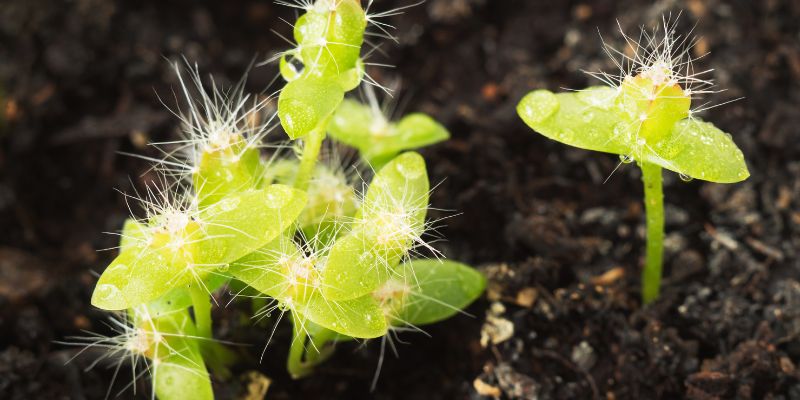
Seedling Stage (2–6 weeks):
As the seedlings emerge from their embryonic slumber, the seedling stage takes centre stage. Delicately navigating the soil, the fledgling plant exhibits fragility, demanding meticulous care.
- Once the seeds have germinated, they develop into seedlings.
- Seedlings are delicate and need careful watering to avoid overwatering or drying out.
- During this stage, the plant establishes its root system and develops its first set of true leaves.
Young Plant Stage (6 weeks–6 months):
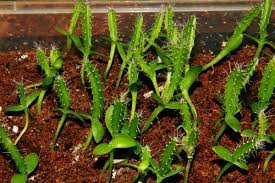
Akin to the adolescence of the plant kingdom, the young plant stage witnesses the formation of a cactus-like structure. It ventures beyond infancy, growing in stature and girth.
- The plant grows into a young, small cactus-like structure.
- It starts to develop more branches, and the main stem becomes thicker.
- It’s crucial to provide proper support for the growing plant during this stage.
Vegetative Growth (6 months–1 year+):
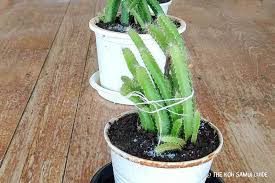
The narrative evolves into a phase of exuberant expansion—vegetative growth. Branches burgeon, and the plant’s verdant canopy widens, showcasing a botanical ballet of life.
- The dragon fruit plant continues to grow and develop more branches and stems.
- Regular watering and fertilisation are important during this stage to support healthy growth.
- Some varieties may start producing flower buds during the vegetative growth stage.
Flowering Stage (1 year+):
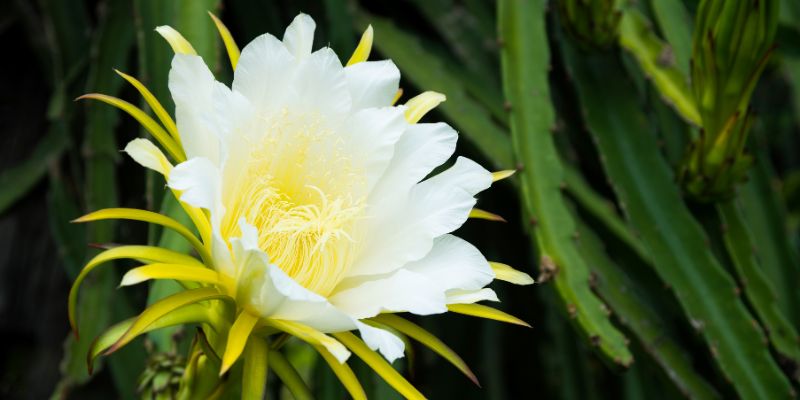
As the plant matures, the symphony of growth crescendos into the enchanting flowering stage. Night becomes the canvas for nature’s artistry as the dragon fruit plant produces extravagant flowers.
- Flower buds begin to form on the mature branches.
- The dragon fruit plant produces large, showy flowers, typically at night.
- Pollination, often done by night-flying pollinators like moths or bats, is essential for fruit development.
Fruit Setting Stage (2–3 months after flowering):
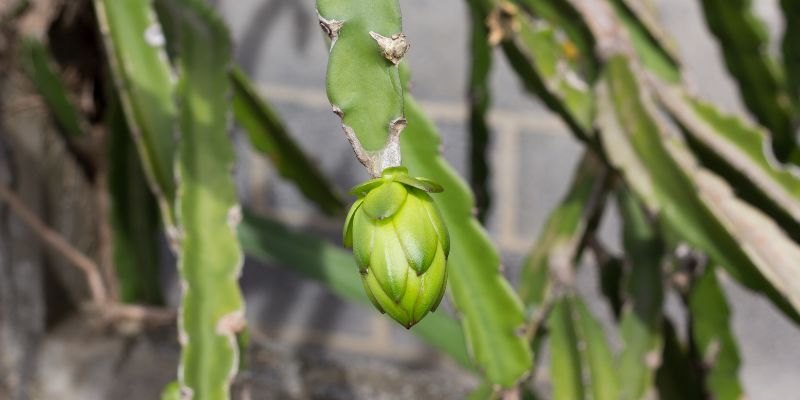
The pollinated flowers metamorphose into nascent dragon fruits, marking the inception of the fruit-setting stage. Small buds emerge, gradually swelling into the iconic fruits we recognise.
- Fertilised flowers develop into dragon fruit.
- The fruit starts as small buds and gradually enlarges over a couple of months.
- Adequate sunlight, water, and nutrients are crucial for healthy fruit development.
Fruit Maturation Stage (2–6 weeks):
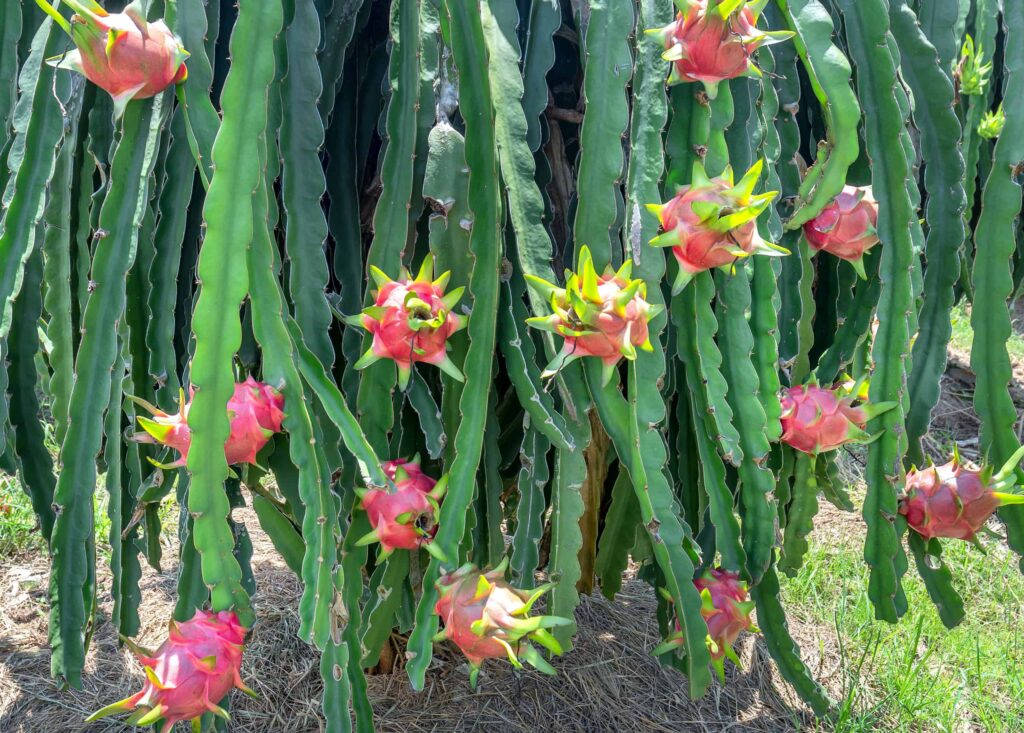
In a climactic crescendo, the dragon fruit attains maturity during the fruit maturation stage. A kaleidoscope of colours adorns the fruit, each hue revealing its ripeness.
- The dragon fruit matures and changes colour, depending on the variety.
- The fruit becomes ready for harvest when its skin colour changes and it feels slightly soft.
- Harvesting is typically done with care to avoid damage to the fruit.
Harvesting and Pruning:
Beyond the harvest lies the cycle’s continuation. Post-harvest, the resilient dragon fruit plant unveils its potential for perpetual growth. Pruning steps in, a meticulous trimming of dead or damaged branches, shaping the plant for its next act.
- Once the fruit is harvested, the plant may produce more flowers for subsequent fruiting cycles.
- Pruning can be done to shape the plant, remove dead or damaged branches, and encourage new growth.
In conclusion
It’s important to note that the specific timeline for each stage can vary depending on factors like climate, growing conditions, and the dragon fruit variety. Additionally, dragon fruit plants are known for their resilience and ability to adapt to different environments.In conclusion, the dragon fruit plant growth stages unfold as a botanical epic—a tale of germination, tender seedlings, adolescence, exuberant growth, enchanting blooms, and the fruition of vibrant dragon fruits. Each stage contributes to the symphony of life, weaving a narrative that echoes the resilience and magnificence of this enigmatic cactus. As we witness the dragon fruit plant’s journey, we glimpse the wondrous tapestry of life’s perpetual renewal in the heart of nature’s garden.
